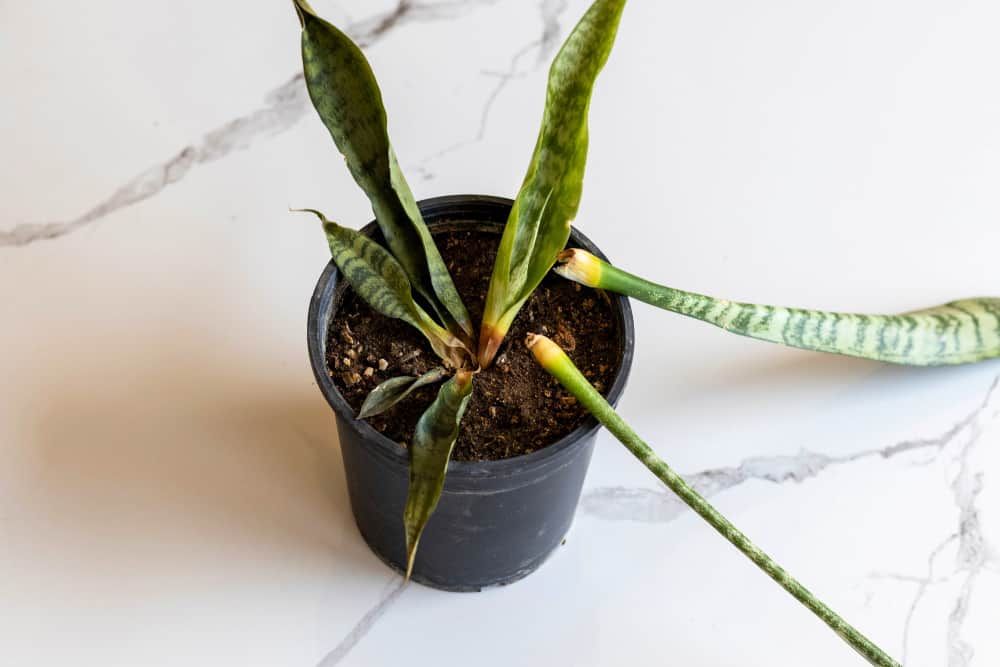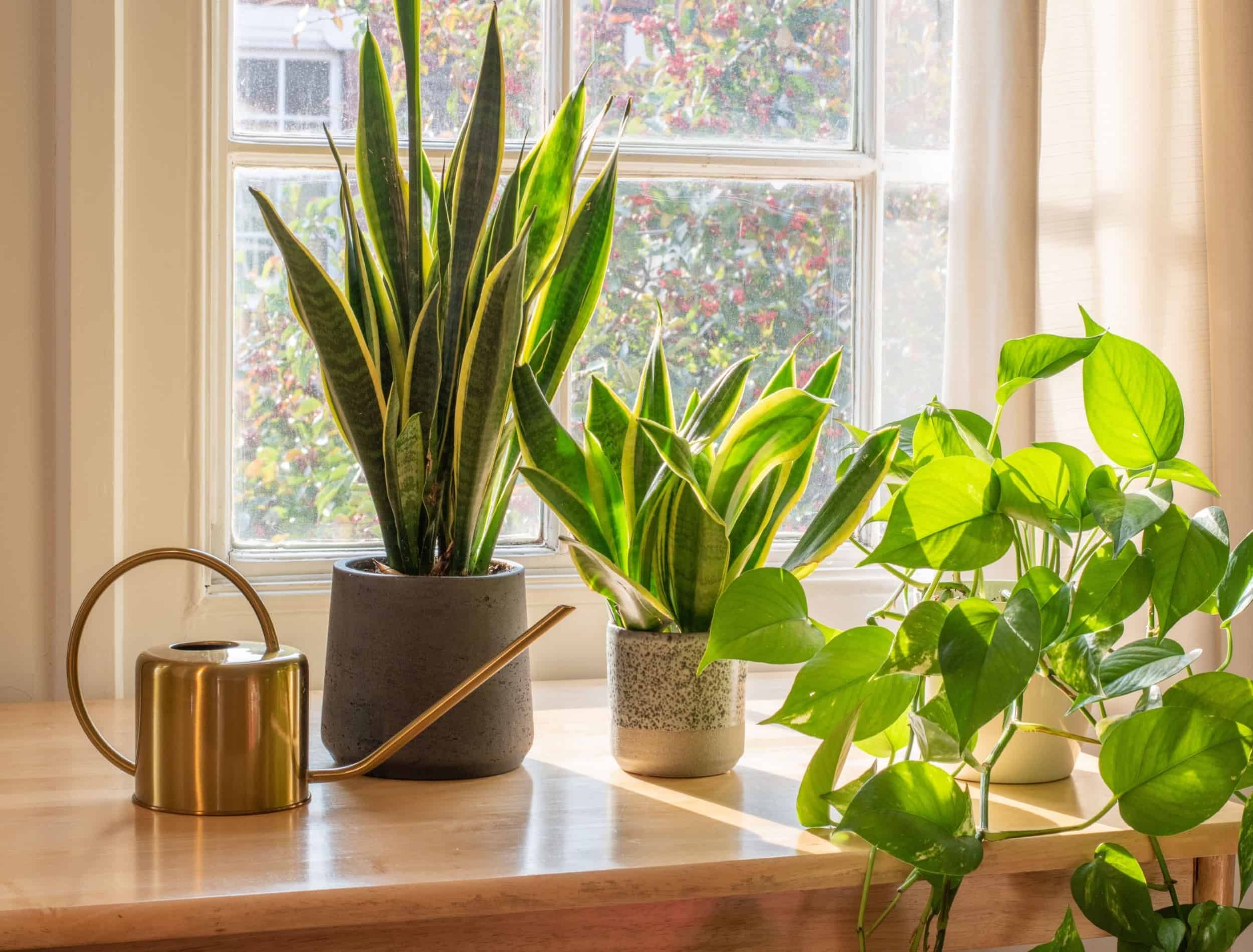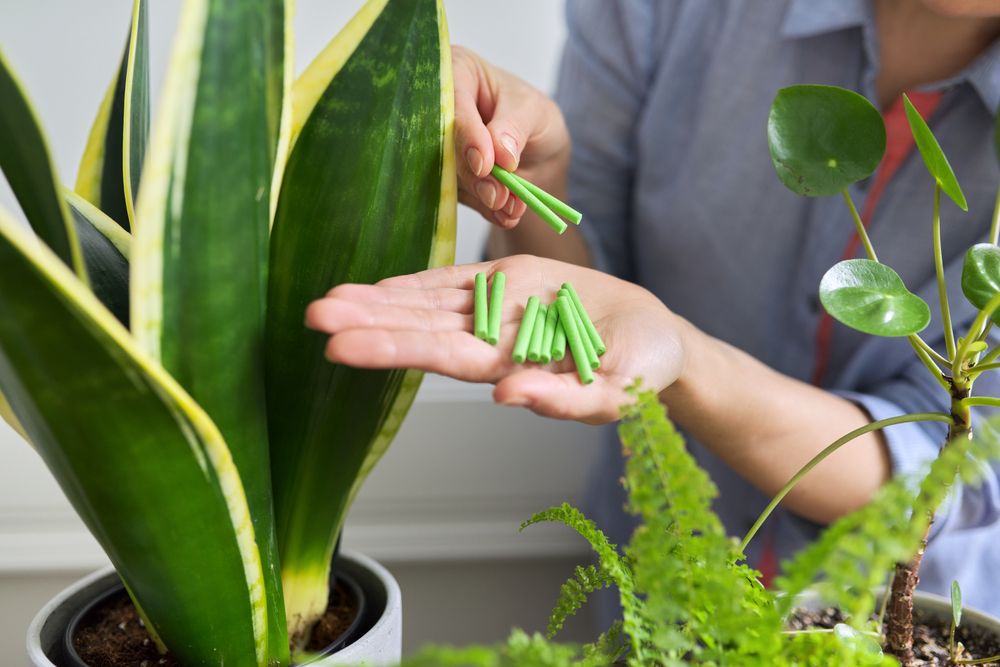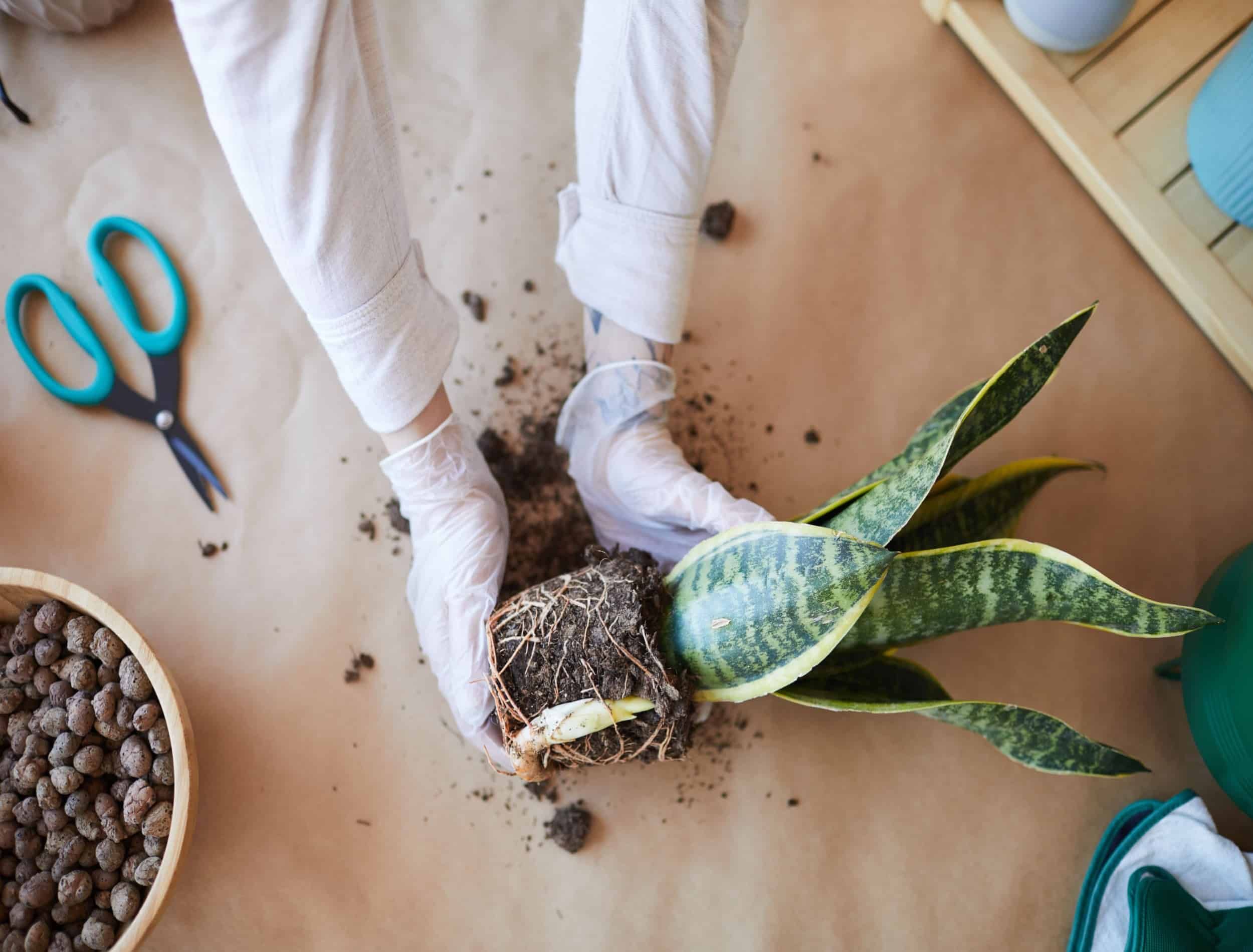The snake plant, also known as mother-in-law's tongue, is favored for its succulent green leaves and low-maintenance nature. While the snake plant once fell under the genus Sansevieria, it has since been reclassified as a Dracaena. There are over 70 species to choose from, but they generally have a similar spiky appearance, come with green leaves, and require similar care.
The tropical houseplant prefers well-drained soil and does well in low-light conditions, making it easy to care for. Still, like all plants, it will struggle if it does not receive the proper care.
So, what are the five common mistakes that will kill your snake plant? Find out below! Plus, you'll learn the signs of different issues and what you can do to fix them.
Inappropriate Watering
Image credits: Bilalstock via Shutterstock
Improperly watering your snake plant is one of the easiest ways to kill it. Like many succulent plants, it does not tolerate overwatering because its thick leaves can store lots of water for later use. So, snake plant don't require watering as regularly as other houseplants.
Overwatering can result in root rot, which kills the plant since the roots can't absorb nutrients. Signs include drooping, bending, or yellowing leaves. Remember to choose containers with drainage holes to avoid water-logging the soil.
If the plant suffers from root rot, remove it from the soil, brushing as much off the roots as possible. Then, cut away dead, mushy roots and replant it in fresh soil. If the plant's root system is completely rotten, you can try salvaging it through propagation. Simply cut a healthy leaf as close to the roots as possible and place it in a jar with clean water.
Underwatering can also wreak havoc on your house plant resulting in wrinkled and thinning leaves. It eventually leads to dead roots and a dead plant.
Snake plants usually recover easily from underwatering as they are drought tolerant. So add a little water, and your plant should perk up! Remember to prune off any dead leaves.
Pro Tip: In spring through fall, water only when the first inch of soil is dry. Cut back to watering once every one to two months in the winter.
Improper Lighting
Image credits: Grumpy Cow Studios via Shutterstock
Snake plants enjoy bright indirect light, but they can tolerate partial shade. Keeping your snake plant in a dark basement isn't exactly optimal since all plants require light for photosynthesis to survive. Bring the plant into more light if you notice a lack of growth and thin leaves.
On the other hand, the plant won't survive in the blazing sun. Too much sunlight results in burnt and wrinkled leaves. Fix the issue by pruning off dead or burnt leaves and moving to a shadier spot.
Pro Tip: Avoid shocking the plant by moving it from one lighting situation to another. Whether you move it from a shady area to a sunnier spot or vice versa, ease the plant into its new home by exposing it to more or less light respectively throughout the week.
Extreme Temperatures
Image credits: D.L.Sakharova via Shutterstock
Snake plants can also suffer from the effects of extreme temperatures. Heat stress presents itself as dry leaf tips and curling or wilting leaves. If the soil is dry, give the plant water and move to a cooler location. Prune off any dead leaves and allow the plant to readjust.
On the other hand, frost causes the cells in the plant to freeze and once the plant thaws, it will die. Browning, squishy leaves are a sign of frost damage. Unfortunately, if your plant is exposed to extreme cold, it usually won't survive. If you notice some healthy leaves, remove and propagate them.
As a general rule of thumb, keep your snake plant in temperatures over 50 degrees Fahrenheit and move it away from drafty windows. One ideal location is in your humid bathroom. The temperatures are perfect and so is the lighting if you have a small window.
Lack of Nutrients
Image credits: VH-studio via Shutterstock
A lack of nutrients can kill any plant, but so can too many. Too much fertilizer can burn the roots, having similar effects to root rot, while too little means the plant lacks nutrients.
If your plant is over-fertilized, remove any dead roots and foliage and repot in fresh soil. If it requires fertilizer, add some following the directions on the type you're using!
It's suggested to use a watered down liquid fertilizer as snake plants are pretty self-sufficient and require little to no fertilizer.
Pro Tip: Only fertilize snake plants once a month during the growing season. It is when the plants are actively growing during the summer months and require extra nutrients.
Failure to Repot
Image credits: SeventyFour via Shutterstock
While snake plants prefer being root bound, they still require repotting every so often. The plant may stop growing or even break through a clay pot. Other signs include leaves (perfect for propagation) hanging off the side of the plant and roots overflowing from the pot. Fortunately, this is a simple fix.
Opt for a clean pot one size up from your current pot. A deep one is best since snake plants are top-heavy. Divide the plant if you'd like to split it by snipping the roots with a sharp pair of scissors. Repot into fresh, well-drained soil and finish with a generous watering. In general, snake plants require repotting every five years or so.
Get Growing!
While the snake plant is difficult to kill, issues can arise. Fortunately, proper care is the best way to keep your plants happy and healthy. Opt for bright indirect lighting and well-drained soil, remember to fertilize sparingly, water when the soil is dry, and repot as necessary.
With the right care, your plant will continue to grow and thrive. You can propagate new baby plants and even spot a few blooms!
Do you have any tips for caring for snake plants? Share in the comments below!






